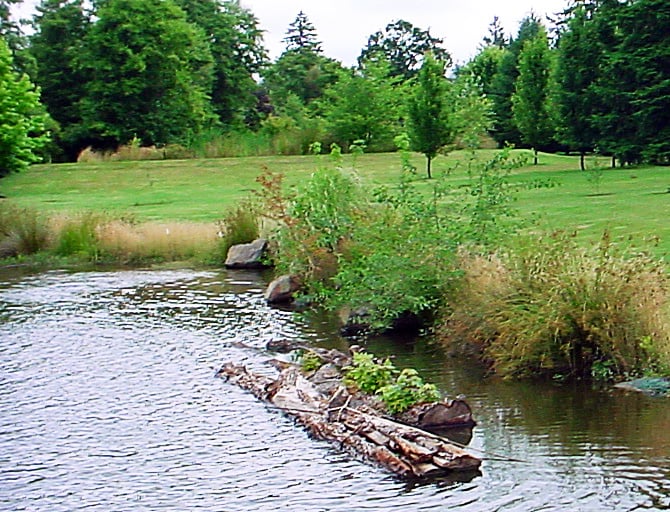Gluggers,
In this blog and the next, I will discuss the two most powerful components of ponds that cost nothing: a dead log and willow. Human froggies do not recognize the importance of a good rotting log in the pond. Frog, it is my hardest sell. I tell them “Get a log!” It doesn’t cost anything and is perceived as valueless.
Newly constructed ponds have only water and often a clay bottom. This will not sustain complex life. To start complex life in a pond, you require a large amount of energy. You can look at a tree as a huge stack of sugar made with sun light energy. If you put this into a pond, cellulose eating bacteria will start to decompose the log; many invertebrates have these bacteria in them where the log becomes a huge residence for insect larvae and crustaceans as well as the microbial population that maintains the health of the pond. River run rock and the log form the bottom habitat for the pond ecosystem. (Video link)
You must find a log that will rot easily. Conifers and oaks have natural tannins that kill insects and fungi. I have found maple works best followed by alder and poplar. These are “sweet” woods. This allows an immediate fermentation to begin. To be effective, this must be an aerobic fermentation. The log should be in the sun tethered to the shore away from the bank to allow turtle habitat. Use splitting wedges to crack open the log. Add soil and plant seed. This will result in a fungal rot starting the process.
The fermentation of the log leads to a balance in the carbonate/carbonic acid buffering capacity of the pond. By placing a log in the pond, you are supplying the essential ingredient to maintain the electronic balance of the water where a pH of 7 is maintained, a neutral pH or a balanced electronic status (the middle way).
Aerating and seeding the pond with decomposing bacteria will at once clarify the pond and encourage the aerobic fermentation of the pond log. By installing the proper pond plants, this aerobic fermentation will naturally occur where decomposing pond plants and woody debris from planted trees will contribute sustain a natural carbon cycle for the pond.
Gluggie, over 4,000 species inhabit the log. It is a deli for you. All sorts of bugs are present. They eat algae and other bugs starting a huge complex biology for the pond. This inexpensive restoration method is perhaps the most powerful addition to a pond: And therefore delicious, eh froggie?
PonDoc from the pond
www.ponddoctor.biz
